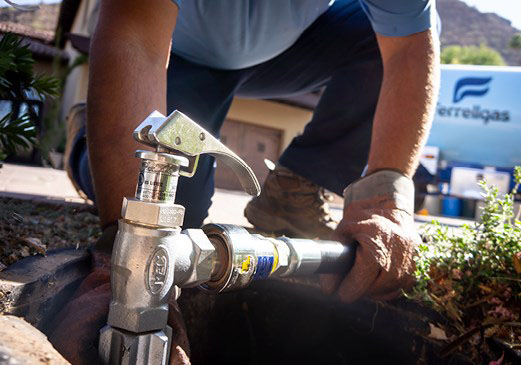Is this the future of propane?
Don’t look now, but renewable propane may be coming soon to a tank near you.
What’s renewable propane, you ask? Well, before we answer that question, let’s take a brief moment to better understand the propane that’s currently fueling your home’s appliances and cooking up delicious burgers, steak, and chicken on your backyard grill.
According to the Propane Education & Research Council, propane is primarily a byproduct of domestic natural gas processing, but some is also produced during the crude oil refinement process. As shale gas extraction has increased in the United States, the production of propane from crude oil has dropped dramatically.
Propane is already a clean and environmentally friendly fuel. According to Propane101.com, propane “produces exhaust emissions that exceed the requirements for clean fuel vehicles and surpass eco-friendly expectations in all aspects.”
But renewable propane, which is produced from either vegetable oil or beef fat, is far cleaner. And as calls for zero emissions and the adoption of emissions standards become more stringent, it enables propane to continue to compete with renewables that include wind and solar.

A Renewable Energy Group biorefinery in Geismar, Louisiana, is currently the only refinery producing renewable propane on a commercial scale in the United States. Industry experts suggest that approximately 5 million gallons of renewable propane will be used in 2019, and that up to 18 million gallons is a possibility by 2021 if future renewable propane productions capabilities are met.
Propane is referred to as autogas when it’s used as an on-road engine fuel. Autogas is an ideal candidate for renewable propane, especially as states adopt stricter standards, including for their own fleet vehicles.
So, while it may be some time before renewable propane is delivered to your neighborhood or business, there won’t be a need to save up for appliances that run on the stuff. That’s because renewable propane has the same molecular structure as conventional propane and can be used in the same applications. This really does make renewable propane green all around – greener for your wallet and greener for the planet.
CATEGORIES
Archives
- Summer 2025
- Spring 2025
- Winter 2024
- Fall 2024
- Summer 2024
- Spring 2024
- Winter 2023
- Fall 2023
- Summer 2023
- Spring 2023
- Winter 2022
- Fall 2022
- Summer 2022
- Spring 2022
- Winter 2021
- Fall 2021
- Summer 2021
- Spring 2021
- Winter 2020
- Fall 2020
- Summer 2020
- Spring 2020
- Winter 2019
- Fall 2019
- Summer 2019
- Spring 2019
- Winter 2018
- Fall 2018
- Summer 2018
- Spring 2018
- Winter 2017
